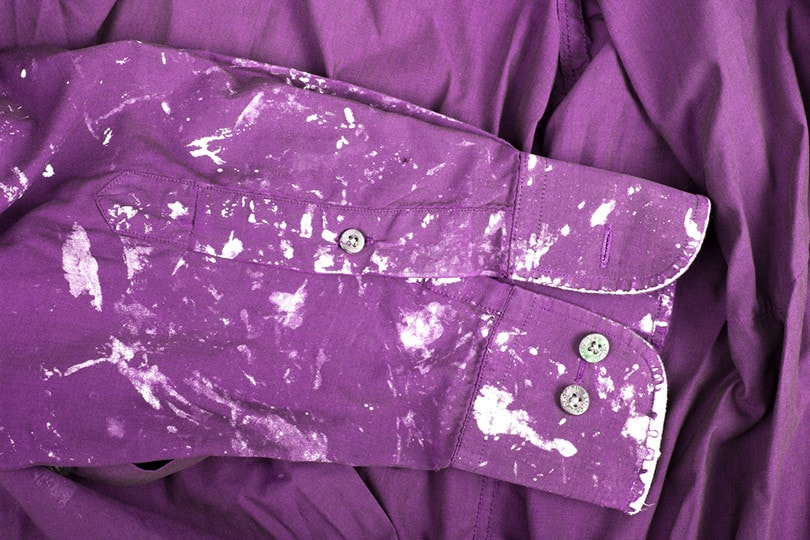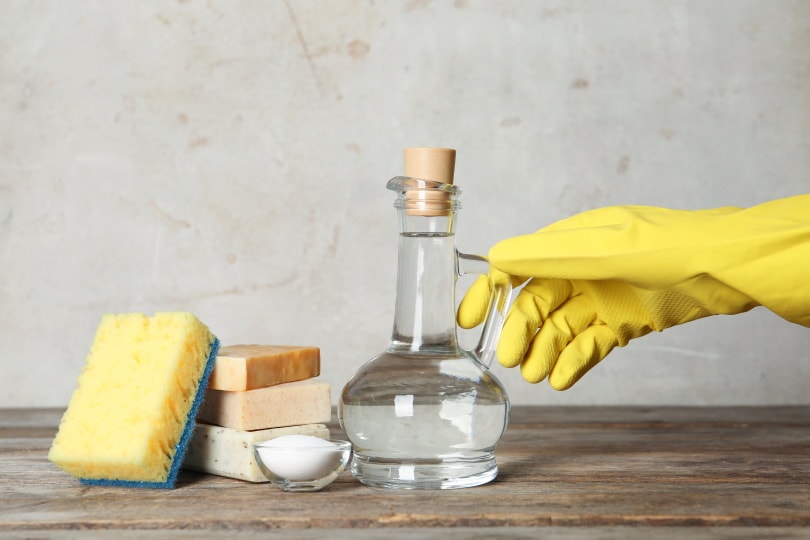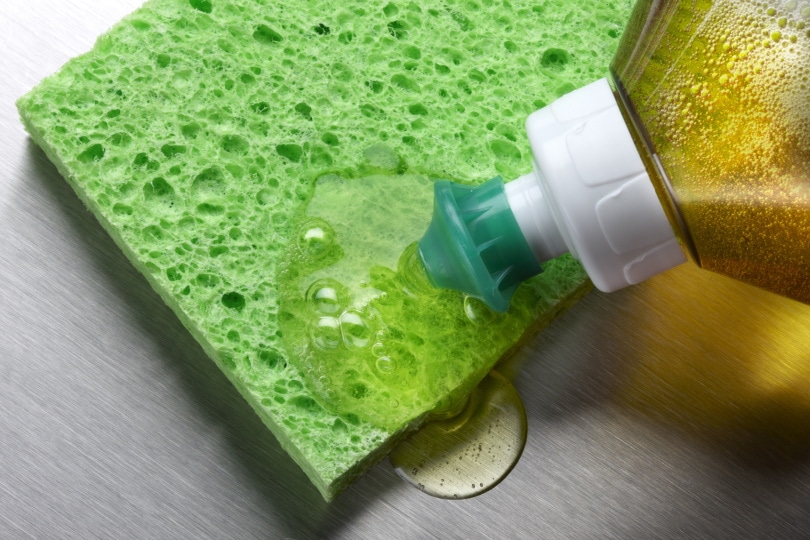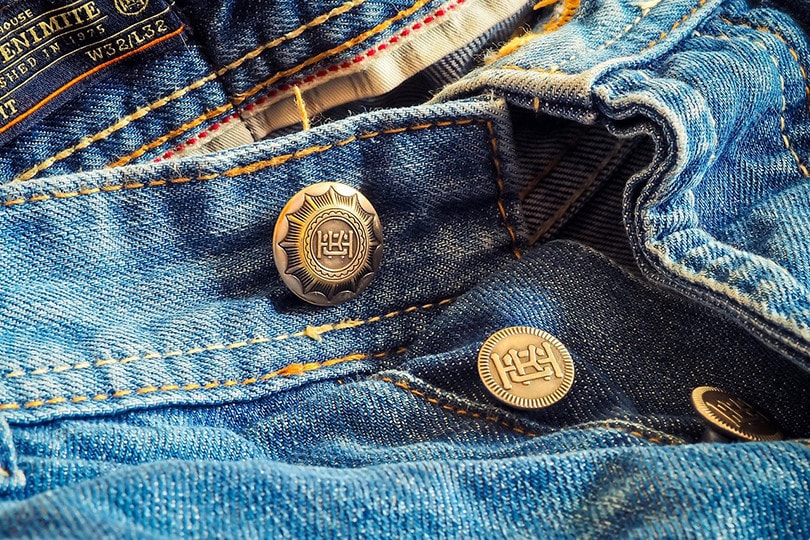How To Get Spray Paint Out of Your Clothes In 5 Easy Steps (with Pictures)
-
Pete Ortiz
- Last updated:

Painting is one of those activities that can certainly be described as therapeutic. It’s incredibly relaxing and can easily get your stress levels down. However, like anything else, there are downsides. One of those downsides is, inadvertently getting the paint on your clothes, and the stress involved in getting it off.
That’s what got us here today. We want to show you the best way to get that paint off your clothes, without damaging them. But before we get to that, let’s look at the materials you’ll need.
Tools & Materials

- Hairspray
- Dish soap
- Cotton ball
- Butter knife
- Turpentine
- Rag/cloth
- Vinegar
- Mineral spirits
- Acetone
- WD–40
Getting Spray Paint Off Your Clothes
We always like to go directly to the point, but sometimes, it’s good to review a couple of things first.
First off, it’s true that we’re here to show you how to get that paint off your clothes. But, there are instances where getting everything out will be impossible. Not because the method doesn’t work, but because of the fabric. We have fabrics that react with different types of stains, making it difficult to ‘un-bond’ the two.
Secondly, knowing what the stain is made of is crucial to the process. You need to figure out if the paint is water-based or oil-based since the type of solution you’ll use in the pre-treatment step of the process will count on that.
Last but not least, you have to remember that getting dry paint off the clothes will be more difficult than wet paint. Therefore, if you’re looking to salvage the situation, you have to act fast.
Step-By-Step Guide To Removing Spray Paint From Your Clothes
1. Blotting the paint
Assuming we’re working with a wet stain, you’ll first need to blot the excess. This step is just as important as the subsequent steps as it will make it easier for the pre-treatment solution to break down the paint left on the fabric before it completely bonds.
The cloth or rag that you’ll use for this job will be useless once you’re done. So use an old one, or something you won’t feel bad throwing away.
Scrubbing the stain at this point is also a no-no. Blot, but don’t scrub. Scrubbing will only exacerbate the situation.

2. Scraping off the paint
This step is meant to help those who took too long to realize they had paint on their clothes. Assuming you noticed some of it got to you after it has dried, you’ll jump-start this process by scraping off the excesses.
Normally, we would ask you to get something sharp for this job. But using a sharp tool will only damage the fibers of the fabric in the process. So the alternative is to use something like a butter knife. That blunt edge will do it, hopefully without causing more damage.
Try not to go too hard while scraping. Too much force will have the same impact as using a sharp tool.
3. Apply dish soap
We’ll go with the dish soap, because our paint is water-based, and hasn’t dried yet.
Once you’re done blotting the excess paint, liberally apply the dish soap, and start scrubbing. Scrub for 20 to 30 minutes, and then rinse using warm water. The water should not be too hot or too cold. If it’s too hot, you’ll ruin the fabric. And if it’s too cold, getting the stain off will be a lot more difficult.

4. Apply a stain remover
The only thing that the dish soap will do is take care of the top layer. In fact, you should count yourself lucky if you manage to get rid of all the paint without using a stain remover.
The work of the remover is to break down the stain that has already bonded with the fibers. And in this instance, we’ll use vinegar. Its acidic nature is what makes it primed for the job at hand, and it’s still effective against both water and oil-based paint.
You’ll need to do a spot test before applying vinegar to any piece of clothing, as there’s a possibility that its acidity could discolor the clothing. So just dip a swab into the remover and then dab it on a section of the fabric that’s hidden.
Give it a couple of minutes to settle in and see what the results are. If there’s some sort of discoloring, you’ll have to look for a different solution. But if there are no changes, saturate a cotton ball, and use it to soak the stain.
Give it 20–30 minutes to break the stain, then rinse it off using warm water.
5. Wash and dry
The final step is to wash the clothing using any normal laundry detergent and allow it to dry. Just don’t wash it together with other clothes. And if you notice there’s a little paint left, repeat the whole pre-treatment and washing process a couple more times.

 Frequently Asked Questions
Frequently Asked Questions
Is vinegar the best solution for dried paint?
Unfortunately, if your paint has already dried up, you’ll need something called a paint thinner. The best examples of paint thinners include acetone, mineral spirits, and turpentine. All these items have chemicals in them that are effective and efficient when it comes to breaking down the bonds already formed between your fabric’s fibers and the paint.
The only problem with applying them is the fact that most of them—if not all of them—can damage, discolor, or leave behind a nasty odor. But vinegar can help you deal with the odor, and dye can deal with the discoloration. Reversing the damage could pose a challenge, so the safest route to take is to first test the thinner before using it.
Can hairspray be used to remove paint from clothes?
Yes, you can use hairspray to deal with your stain situation. It’s a product that contains alcohol, and alcohol is known to be effective in breaking down and unbinding paint from fibers.
The only problem is, depending on which hairspray you choose to go with, it could stain the fabric as well. So just remember to test it first in one of those hidden areas, before applying it.
Final Words
We sincerely hope this guide helped you take care of that paint stain. We know removing it can be difficult, but what really matters is trying and not giving up. If you do have other methods that you’d like to share with us, feel free to reach out in the comments below.
See Also:
- Soft-Lite Windows vs Pella: Pros, Cons, & Differences?
- Roof Window vs. Skylight: What’s the Difference?
Featured Image Credit: Joanna Dorota, Shutterstock
Contents


